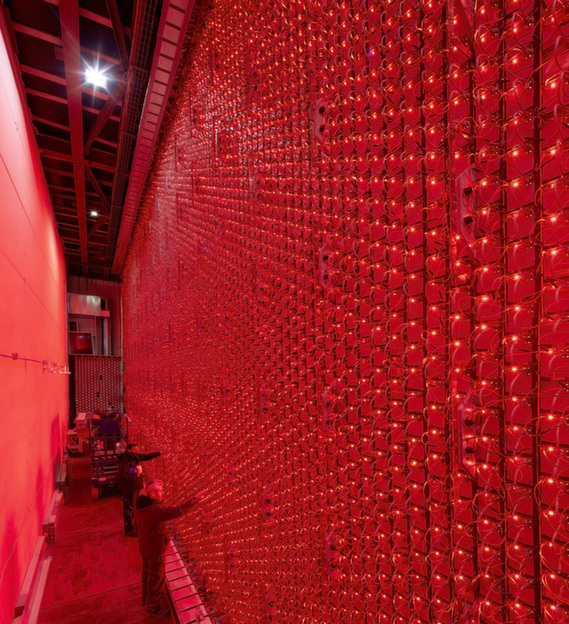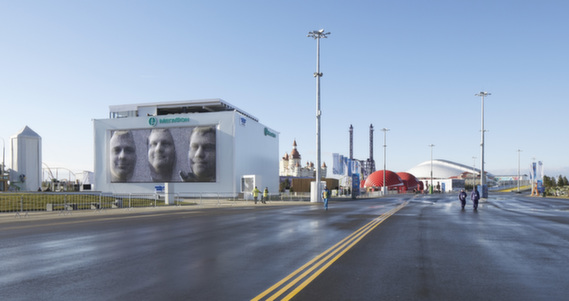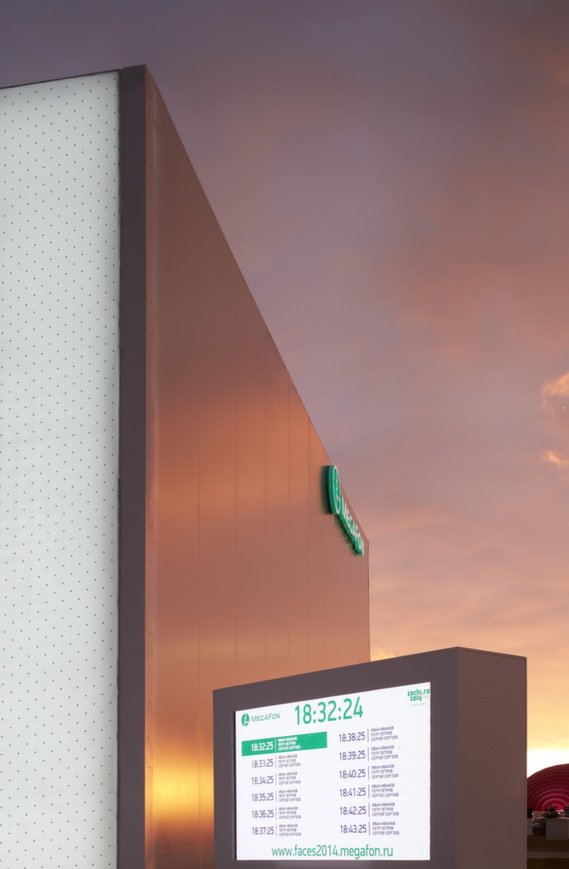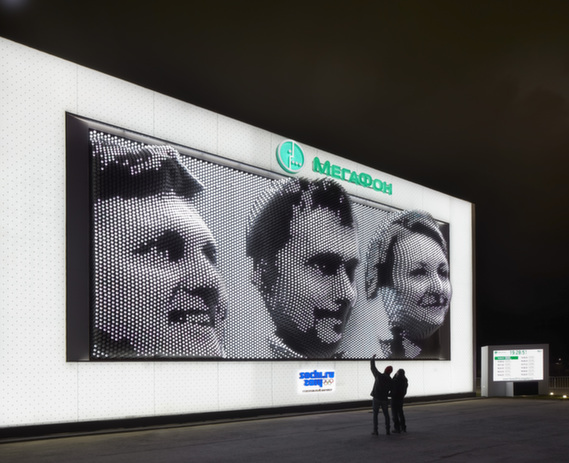Visitors to the Sochi Winter Olympic Games are being given the opportunity to create giant self-portraits in a pavilion created by designer and architect Asif Khan and commissioned by Russian telecoms company MegaFon. The pavilion is situated at the entrance to the Olympic Park and judging by these photos and the video shown below, is pretty darn cool. The 2,000 metre-squared cube features a kinetic facade that can recreate the faces of visitors from 3D scans that are made in photo booths installed within the building.

The finished portraits appear three at a time, with each one displayed eight metres tall. Created by Khan in collaboration with Basel-based engineers iart, the portraits are formed by the use of 11,000 actuators.
"Each of the 11,000 actuators carries at its tip a translucent sphere that contains an RGB LED light," says Valentin Spiess, CEO at iart. "The actuators are connected in a bidirectional system which makes it possible to control each one individually, and at the same time also report back its exact position to the system. Each actuator acts as one pixel within the entire façade and can be extended by up to two metres as part of a three-dimensional shape or change colour as part of an image or video that is simultaneously displayed on the facade."
According to Spiess, the process of creating a selfie at the pavilion is as "fast and simple as using a commercial photo booth".


Khan has form with Olympic pavilions, having created the Coca-Cola Beatbox pavilion for the London 2012 Games. That piece featured a series of interlocking ETFE cushions with sound embedded within them, meaning that visitors could 'play' the pavilion like a musical instrument. Both the London and Sochi pavilions reflect Khan's general interest in creating transformative structures.
"For thousands of years people have used portraiture to record their history on the landscape, buildings and through public art," says Khan of the Sochi work. "I’m inspired by the way the world is changing around us and how architecture can respond to it. Selfies, emoticons, Facebook and FaceTime have become universal shorthand for communicating in the digital age. My instinct was to try and harness that immediacy in the form of sculpture; to turn the everyday moment into something epic. I’ve been thinking of this as a kind of digital platform to express emotion, at the scale of architecture."


Source: http://shar.es/QK706

